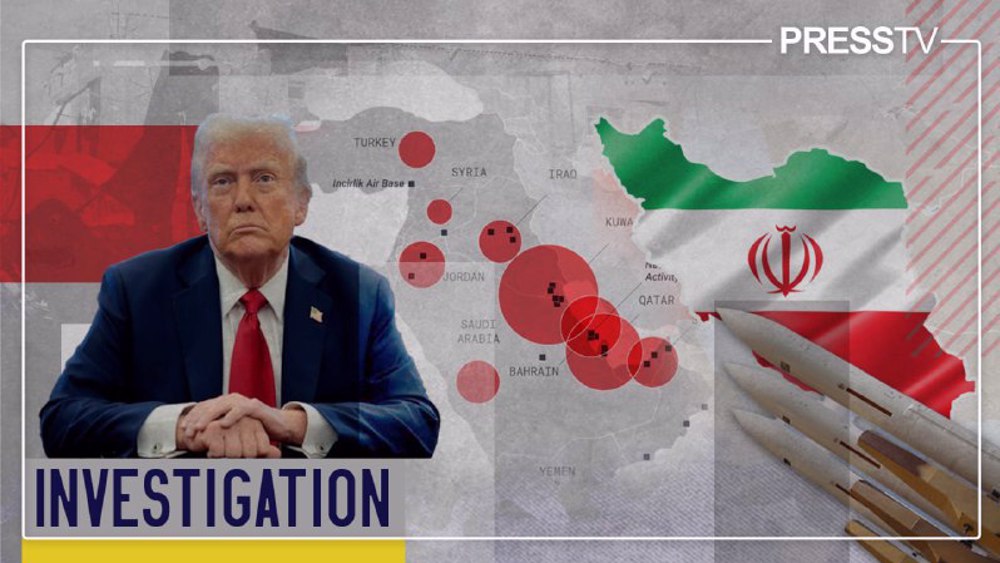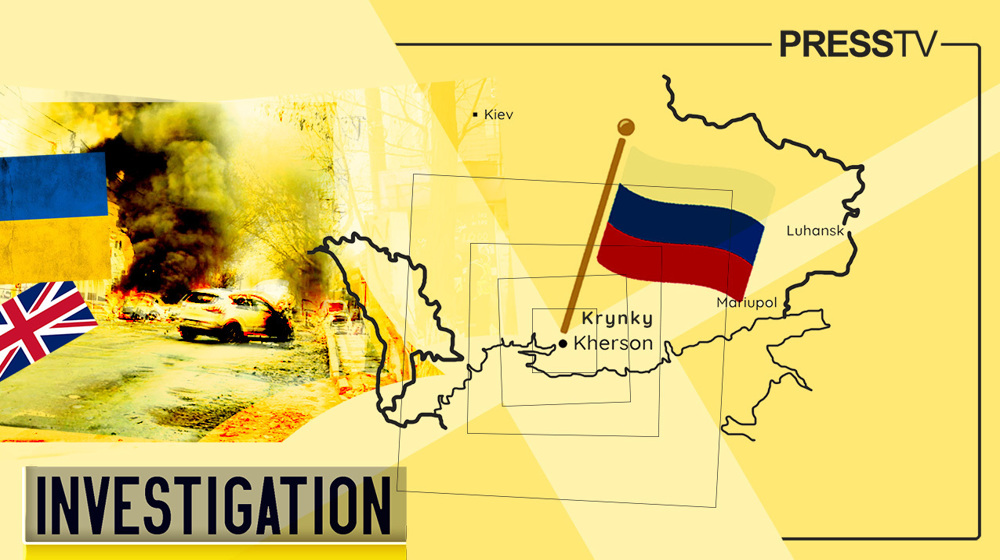How Ukrainians became cannon fodder in British military’s Krynky debacle
By Kit Klarenberg
In November 2024, Ukrainska Pravda published a little-noticed investigation, documenting in frequently disquieting detail the catastrophic failure of Ukraine’s long-running effort to capture the village of Krynky in Russian-controlled Kherson, October 2023 - June 2024.
That it was to all intents and purposes a British operation, from deranged inception to miserable conclusion, was perhaps the most shocking revelation.
As the proxy war teeters on collapse, it’s high time London’s covert role in fomenting relentless escalation, and getting enormous numbers of Ukrainians pointlessly killed, is critically scrutinized.
In June 2023, the Kakhovka Dam’s destruction almost completely submerged large swaths of Kherson, a key proxy war frontline, depopulating these areas in the process. In the wake of this incident, responsibility for which remains a point of significant contention, Kiev decided to secure a beachhead on Russian territory on Dnipro’s Russian-held left bank.
As Ukrainska Pravda notes, the initiative was and remains “one of the least publicized operations by the Ukrainian Armed Forces,” despite lasting as long as the Battle of Bakhmut.
This omertà endures today, with many “experienced officers” involved in and aware of the operation unwilling to answer any questions put to them by Ukrainska Pravda.
One pseudonymous marine quoted “was so concerned about the privacy” of his conversations with the outlet that he contacted them “from different numbers almost every time.”
The rationale for this conspiracy of silence is obvious. The Krynky operation’s failure was so egregious that it easily ranks among the uppermost tier of the biggest and worst modern military calamities.
Moreover, though, the effort had a supremely grand ultimate purpose, in which the surviving Ukrainian marines involved in the operation believed so strongly that several of them spoke of Kiev’s failed Krynky incursion in the same terms as the June 1944 Normandy landings - D-Day.
Ukrainska Pravda reveals it was hoped securing the Krynky beachhead would be a “game-changer”, opening a second front in the conflict, allowing invading marines to march upon Crimea and all-out victory in the proxy war.
This fantastical objective has hitherto never been publicly divulged. A December 2023 BBC article nonetheless hinted at intended greatness. It discussed the horrendous experiences of Ukrainian soldiers who “spent several weeks on the Russian-occupied side” of the Dnipro, as Kiev sought to establish its Krynky “bridgehead”.
Along the way, the British state broadcaster noted parenthetically, “President Volodymyr Zelensky has been keen to talk up this offensive, framing it as the beginning of something more [emphasis added].”
‘Constant Fire’
Per Ukrainska Pravda, Krynky’s foundations were laid in February 2023, when it was announced London, “perhaps Ukraine’s most active and determined ally”, would begin a training program for Ukrainian marines and pilots. Behind closed doors, Britain - “a naval power” - concurrently began lobbying Kiev to “start using marines for waterborne operations.”
However, the proposal “did not resonate…for a long time” with Zelensky, or then-Commander-in-Chief Valerii Zaluzhnyi. So the British took the “radical step” of dispatching an “official delegation” to Kiev, to convince the pair.
“The British team persuaded Zaluzhnyi, and he said: that’s it, we’re creating the Marine Corps,” a source informed the outlet. London then instituted five-week-long training programs.
Ukrainians were taught on British territory “how to overcome water obstacles: to cross a river, land on the shore and conduct operations on land.” Survivors of the operation told Ukrainska Pravda, “They realized they were being prepared for something big and different from their previous tasks during their stay in the UK.”
Come August, almost 1,000 Ukrainian marines had reportedly been tutored “in small-boat landing operations and amphibious assaults”, in training environments identical to where they would land in and around Krynky.
The stage was thus set for seizing the beachhead, which commenced two months later. “Almost immediately” though, “the operation’s biggest flaw - its planning - began to work against the Marines,” producing “huge losses”.
Ukrainska Pravda acknowledges the mission “wasn’t fully thought through in every aspect,” which is quite the understatement.
Ukrainian marines reaching Krynky required them to travel across the Dnipro via boat or be dropped off at numerous small islands nearby and swim to land. Resupply was also supposed to be conducted via boat deliveries.
In the aforementioned December 2023 BBC article, a marine participating in the catastrophe revealed it was expected by the operation’s British planners that once the Ukrainians landed, their adversary “would flee and then we could calmly transport everything we needed.”
Alas, “it didn’t turn out that way”:
“The entire river crossing is under constant fire. I’ve seen boats with my comrades on board just disappear into the water after being hit, lost forever to the Dnipro River…When we arrived on the [eastern] bank…they knew exactly where to find us. They threw everything at us - artillery, mortars and flamethrower systems. I thought I’d never get out.”
To make matters worse, “a lot of young guys” with zero combat experience were being fed into Krynky. “It’s a total nightmare…some of our marines can’t even swim,” the embattled marine bitterly relayed to Britain’s state broadcaster.
Fearing “things will only get worse,” he added “no one” dispatched to the “hell” there knew “the goals” of the operation in which they were engaged. “Many” believed their commanders had “simply abandoned” them, and “our presence [has] more political than military significance.”
‘Almost Impossible’
Ukrainska Pravda gravely notes, “not all [marines] made it” to Krynky, and “not all who did return.” Even those who survived the perilous journey “frequently sustained injuries or were killed” upon arrival, “because the Russians immediately targeted them with artillery.”
During landings, “every second mattered”, to the extent the Ukrainians quickly “abandoned the use of life jackets” for their river crossings, as detaching one onshore took half a minute, “and there [could] be casualties during that time.”
Fatal operational blindspots and blunders didn’t end there. Resupply boats were likewise relentlessly targeted by Russian forces, making it virtually impossible to equip marines with even the most basic essentials, including ammunition, bandages, food, medicine, and water.
The Ukrainians resorted to using hexacopter drones “to deliver all sorts of things” to the frontline, “even blood for transfusions.”
Meanwhile, one marine bitterly informed Ukrainska Pravda, “heaps” of artillery and rocket support “that would work in our favor” promised by their superiors never materialized.
“HIMARS will fire like machine guns!” they were told, “but we were deceived in the end.”
Regardless, marines were still expected to carry out extraordinarily grand missions once - if - they reached Krynky. For example, three marine brigades were tasked with capturing a 30-kilometer-long beachhead around the village, on foot and without heavy equipment, “using units already exhausted from fighting in Donbas,” within just four days.
This also necessitated thrusting up to seven kilometers inland, into Russian territory.
“The order seemed insane to everyone at the time,” a participating marine told Ukrainska Pravda, “we warned that it would be a massacre, but we were told to keep pushing.”
Their dire predictions were proven completely correct, the mission abruptly failing after “a considerable number of highly valued personnel” were blown to bits by Russian airstrikes, missiles, and tank fire. Yet, this senseless turkey shoot paled in comparison to the disaster and insanity of Britain’s plot for Kiev to march on Crimea.
A survivor of the Krynky operation said this “ultimate goal” was “almost impossible.” To accomplish it, Ukrainian marines “needed to cover a vast distance” - 80 kilometers - into territory that had been under heavy Russian occupation for 18 months.
Furthermore, it was “impossible to establish a foothold” in many of the areas where marines landed, which were “nothing but swamp”. Unable to dig shelters or trenches in the terrain, they were forced to hide from Russian bombardment in craters left by previous attacks.
Some marines intentionally “got lost” on islands near Krynky to avoid the river crossing. Others tried to reach the area and return floating “on car tyres”.
At least two “heroes” involved in the operation “refused to act” on certain orders from their commanders, “as doing so would have been suicidal.”
Some wounded soldiers literally took their own lives, “because there was no evacuation.” These were just a few of the “tragic stories” to result from Britain’s futile, covert proxy push on Crimea.
‘Remain Silent’
The onset of winter was “when the situation on the [Dnipro’s] left bank started to really deteriorate.”
The Russians transferred significant assault forces to the area, used glide bombs “to destroy a large part” of Krynky, and “figured out how best to target Ukrainian forces’ river routes, especially at the turns, where the boats had to slow down, and landing points.” Moscow’s artillery onslaught left the area “cratered like the moon.” A reconnaissance officer told Ukrainska Pravda:
“Each time our battalion entered [Krynky], the situation got worse and worse. People got there, only to die. We had no idea what was going on. Everyone I knew who was deployed to Krynky is [sic] dead.”
The situation further “took a dark turn” in early spring 2024. Not a single boat could enter or leave the area. “By May, the situation was a disaster” - but it was not until July the last of Ukraine’s marines withdrew from the area, being forced to swim back.
“Most people” Ukrainska Pravda interviewed about Krynky “are convinced the operation dragged on for at least several months longer than it should have.” One despaired:
“We had to withdraw in spring at the latest, during the foggy season. We could have got all of our soldiers out at that point. It would’ve saved people’s lives. But instead, we waited until nothing could be done any longer. Until the very last moment.”
During the operation’s entire nine months, Krynky never came under full control of Kiev’s British-trained and directed marines. They managed to capture, recapture, and hold “about half of the village” at most, per Ukrainska Pravda.
“As of late 2024, all of Dnipro’s left bank in Kherson Oblast is under Russian control,” the outlet concludes. No wonder that today, neither Ukrainian nor Western officials are “particularly vocal about Krynky, preferring to remain silent on the issue.”
Zaluzhnyi “has never issued a public statement about the operation.” In May 2024, he was appointed ambassador to Britain. Lieutenant General Yurii Sodol, Ukraine’s former Marine Corps commander who oversaw Krynky, was dismissed from the armed forces in November 2024, ostensibly after failing a military medical exam.
Total killed and wounded figures for the operation remain concealed, although Ukrainska Pravda learned just one brigade lost around 700 personnel during the nine-month-long debacle.
Had it been wave after wave of poorly prepared, ill-equipped and militarily unsupported British marines dispatched in large numbers to certain death in Krynky, one might expect their commanders and anyone responsible for planning the operation to face severe censure.
As it was Ukrainians doing the fighting and dying in an unwinnable, literal quagmire, British officials are likely to remain immune from repercussions.
In a bitter irony, Zelensky may well be joining them in London in due course.

Brewing storm: Which US bases in West Asia are within Iran’s missile crosshairs?

Bankrolling genocide: The biggest donors to AIPAC, leading US Zionist lobby group

Exposing Britain’s long-running overt and covert war on Yemen
Eid al-Fitr celebrated in Iran, other countries as holy month of Ramadan comes to a close
VIDEO | Land Day protest in New York for Palestine
VIDEO | Press TV's news headlines
VIDEO | Austrian petition demands expulsion of Israeli envoy
American warplanes bomb Yemeni capital 13 times
VIDEO | Palestinians mourn loved ones on day of Eid
Defying ICC arrest warrant, Hungary scheduled to host Netanyahu
VIDEO | 'Israeli regime deliberately targets health workers'







 This makes it easy to access the Press TV website
This makes it easy to access the Press TV website